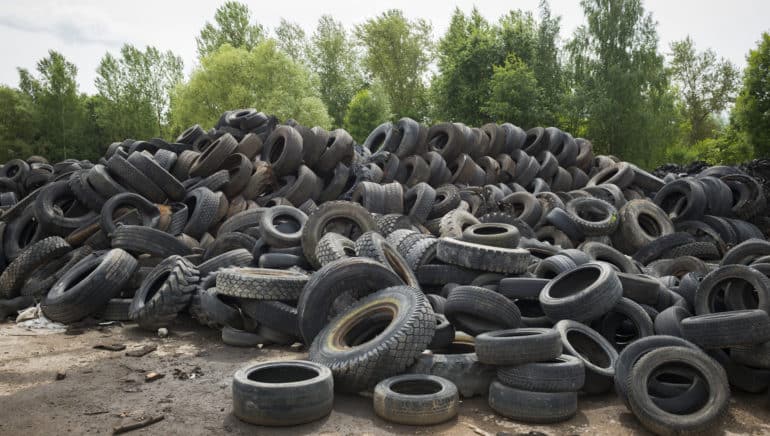Everything was better in the old days. We used not to have plastics made from hydrocarbon. What is plastic today used to be natural rubber. Natural rubber is a substance similar to vulcanised rubber that is produced by the milky sap (latex) of rubber plants. An earlier term in use was caoutchouc, a word originating from the language of the Tupi and Quechua Indians and roughly translating into “tears of the tree”, “crying” or “bleeding wood”. Which of course does not sound like everything was better at all in the old days.
Natural rubber originally comes from Central America and had been used by the people in Mesoamerica for centuries. The temple complexes of Tikal, Palenque or Chichen Itzas, for example, have images of ball games engraved into the stelae and buildings. These ritual games were played with solid rubber balls made from natural rubber. Some of these games ended in the ritual sacrifice of the players. So not everything was better in the very old days.
Natural rubber is water-soluble, brown, and smells bad. I own a crocodile made from natural rubber by indigenous people from Brazil. My daughter likes to play with it, but beyond that, it does not have much use. That used to be the fate of natural rubber until 1839, the year when Charles Goodyear invented the vulcanisation of natural rubber – a process that created a new, very flexible, water-resistant, and durable material – vulcanised rubber.
Without wishing to add a PR aspect – the name “Goodyear” already indicates how the story continued. Even today, the production of car tyres consumes some 70% of all globally extracted natural rubber. The triumph of the motorcar also meant an increase in demand for natural rubber – a fact that led to the building of the opera house of Manaus, the legendary film Fitzcarraldo, and a ghost town in the Amazon jungle called Fordlandia. With the natural rubber monopoly falling in Brazil, the boom ended as abruptly as it had started. And just like in most cases when a resource boom has come to its end, the scars in the environment, the social setting, and the political structures (i.e. governance) can still be seen today. And it is not getting any better either.
In Brazil, the large-scale cultivation of natural rubber was never going to happen as a fungus that was resistant to fungicides prevented the creation of monocultures. Therefore, natural rubber is still produced in a very sustainable way in Brazil today. Given that the fungus did react to fungicides in other parts of the world (N.B. also an ESG topic), the creation of plantations in South-East Asia and Africa was only a matter of time. Brazil thus lost its no.1 rank in natural rubber production to countries like India or the then Belgian Congo, which was a private colony owned by the Belgian King Leopold II. He maltreated the local population, not only but also for the production of natural rubber – so much so that even 100 years on, he has been immortalised by the Wikipedia entry “Atrocities in the Congo Free State”.
The next big step in the history of natural rubber was the sequence of WWI and WWII. War was yet again the father of all, to paraphrase Heraclitus. Especially in WWII, the demand for rubber was enormous, and both Germany and the USA were cut off from their natural rubber sources. This situation resulted in frenzied efforts to produce rubber synthetically – which heralded the age of synthetic rubber and thus, of proto-plastic.
Nowadays, many products like rubber tyres, rubber boots, chewing gums, erasers, and condoms contain a mix of natural and synthetic rubber. Both materials can be linked to a number of ESG problems. What is important to me is to point out the complexity of the topic and the social and environmental experiences made in the past. Simply replacing one raw material with another one will be an unviable shortcut in the future as well.

